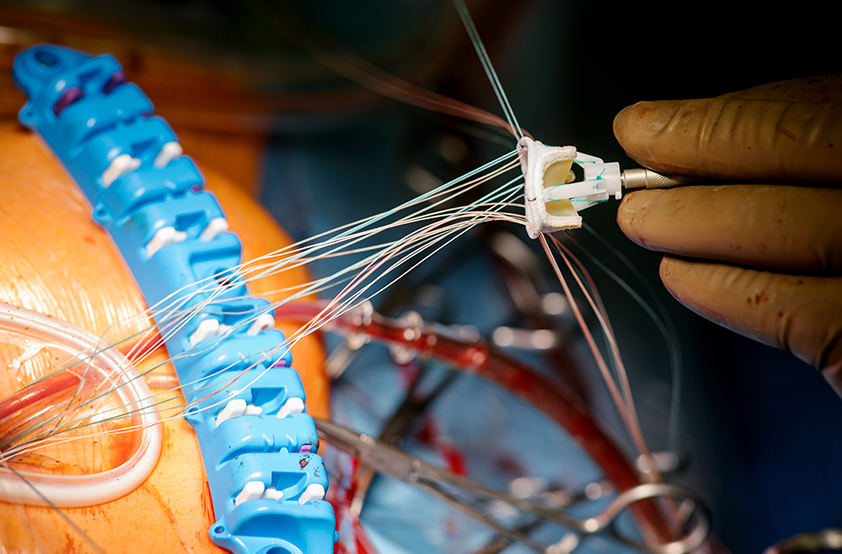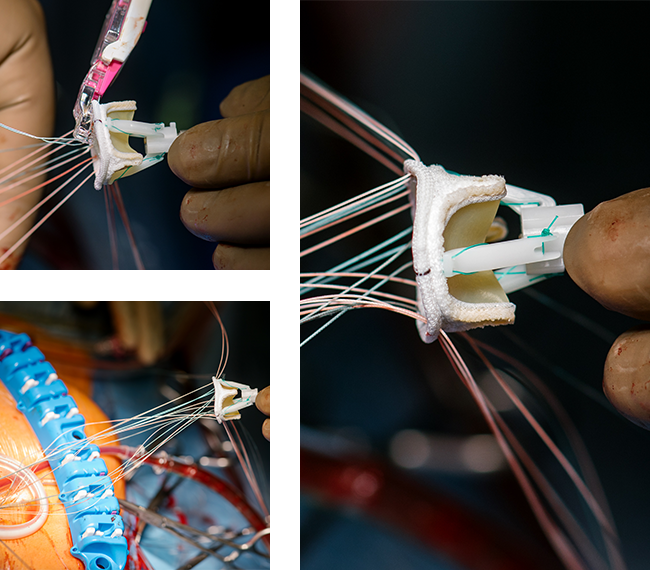
Endoscopic aortic valve replacement

The aortic valve connects the left ventricle to the aorta, through which the blood enters the systemic circulation. The aortic valve can be characterized by various clinical pictures. On it can be congenital as a bicuspid aortic valve, in which case the valve has only two leaflets instead of three. The aortic valve can be narrowed by calcium plaques, which is known as aortic valve stenosis. If there is aortic valve insufficiency, the cusps of the valve do not come together properly and this leads to the aortic valve regurgitation. Depending on the severity of the disease, an operation may be necessary to surgically replace the aortic valve.
There are different types of prosthetic valves that can be used to replace the aortic valve. The well-known are mechanical and biological (bovine/pig) prosthetic valves. The selection of the appropriate valve depends on several factors, including the patient's age, general condition and preferences.
In contrast to traditional open heart surgery, which requires sawing the sternum to gain access to the heart, endoscopic aortic valve replacement provides access to the heart through a small keyhole between the ribs.
Endoscopic aortic valve replacement is an innovative, minimally invasive method in which the aortic valve is replaced through small incisions in the chest wall using special endoscopic instruments.
A four-centimeter incision between the ribs on the right side, in the second intercostal space, is used for surgical access. A small 3D camera enables the surgeon with 3D glasses to see the entire surgical field as clearly as possible via a screen. The heart-lung machine, which takes over the oxygen supply to the other organs during the operation and when the heart is stopped, is mainly connected via the femoral vessels or the subclavian artery.
Endoscopic aortic valve replacement offers many advantages such as smaller incisions, less tissue trauma, less blood loss, shorter recovery times and less post-operative pain compared to traditional open heart surgery.

